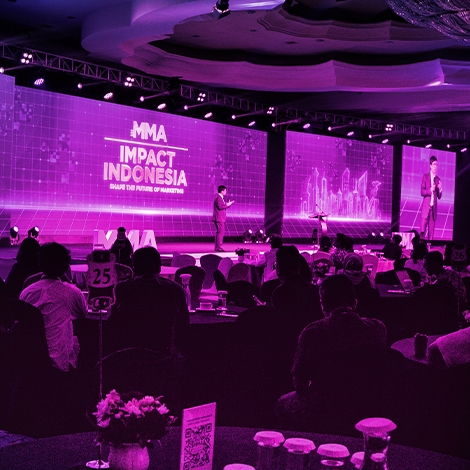
For more than a decade, customer retention strategies in the Food & Beverage (F&B) and Retail industries have centered on Reward and Loyalty programs that emphasize point accumulation and delayed redemption. However, the proliferation of digital ecosystems and super-app platforms has fundamentally transformed consumer expectations. Contemporary consumers increasingly favor instant gratification – seeking immediate, tangible benefits rather than deferred rewards.

This shift has catalyzed the emergence of a new mechanism in China, now rapidly diffusing into Vietnam: Instant Vouchers – real-time, redeemable discount coupons integrated at the consumer touchpoint.
The Behavioral Transformation: From Deferred Loyalty to Instant Rewards
Between 2015 and 2020, traditional loyalty frameworks were pivotal in maintaining customer retention. Enterprises invested substantially in membership systems, reward platforms, and point-based ecosystems.
Yet, the post-pandemic surge in digital commerce and online delivery platforms has redefined purchasing patterns:
- Consumers, accustomed to frictionless digital experiences, now prefer to “claim and apply vouchers instantly” on platforms such as Meituan, Ele.me (China), ShopeeFood, and GrabFood (Vietnam).
- According to NielsenIQ, in Vietnam’s metropolitan areas, over 50% of online food delivery transactions involve voucher applications.
- Instead of accumulating loyalty points over months, consumers increasingly pursue immediate savings and instant value realization.
This behavioral evolution is extending beyond F&B to Retail, Service, and Lifestyle sectors – signaling the formation of Instant Vouchers as a new market standard.
Insights from China: Integrating Vouchers as the Core Transactional Engine
Meituan’s Voucher-Driven Model
Meituan, China’s leading food delivery and local service platform, exemplifies the effectiveness of Instant Vouchers.
- In a single nationwide campaign, over 100 million orders utilized vouchers within one day, representing 83% of total transactions.
- Through a data-driven, real-time allocation system, Meituan optimized conversion rates and minimized promotional inefficiency – transforming vouchers into a precision marketing instrument rather than a mere discount tool.
The “0 Yuan Milk Tea” Phenomenon

Brands such as Luckin Coffee and HeyTea have demonstrated viral success through “0 Yuan Latte” and “0 Yuan Milk Tea” campaigns hosted on WeChat Mini Apps:
- Consumers claimed vouchers and placed orders seamlessly within a few steps.
- Vouchers directed customers straight to purchase without disrupting the journey.
- These campaigns generated social media buzz and tens of millions of transactions.
Vouchers as Macroeconomic Stimulus
Beyond private enterprise, many local governments in China have leveraged digital coupon distribution (e.g., “spend 54 CNY, get 18 CNY”) as a fiscal stimulus measure.
Empirical research indicates these vouchers not only incentivized immediate consumption but also induced spending beyond their nominal value, positioning vouchers as a behavioral catalyst for aggregate demand stimulation.
The Vietnam Context: Consumer Education Through Digital Platforms
In Vietnam, platforms such as GrabFood and ShopeeFood have “educated” consumers to expect discount integration as part of every purchase journey.

According to iPOS.vn and Nestlé Professional (2024), Vietnam hosts approximately 300,000 F&B establishments, yet only 36.6% currently implement voucher systems.
Most businesses remain focused on physical expansion or third-party platform dependency, overlooking the strategic benefits of direct consumer retention mechanisms.
This discrepancy reveals a substantial opportunity for voucher issuance and management technologies, with GiftZone emerging as a pioneering domestic platform enabling Vietnamese enterprises to emulate China’s successful model.
Strategic Implications: Why Instant Vouchers Outperform Legacy Loyalty Systems

From “Retention” to “Expansion”
Drawing upon China’s model, Vietnamese businesses increasingly recognize vouchers as long-term engagement assets rather than transient promotional tools.
Key implementation pathways include:
- Dissemination via familiar digital environments (e.g., Zalo, Mini Apps, e-wallets, or in-store QR codes);
- Integration with POSM, gamification mechanics, or receipt packaging QR codes to drive traffic to brand-owned channels;
- Synchronization with CRM and POS systems to achieve unified customer data, measurable performance, and enhanced strategic insights.

Cross-Promotional Synergies
A growing number of brands are collaborating through co-voucher ecosystems – sharing digital wallets and reciprocal mini-app promotions – to expand customer bases organically while reducing dependence on costly paid advertising channels.
Wrap-Up
Instant Vouchers represent far more than short-term discounts. Within a highly digitized and competitive F&B environment, they constitute a strategic lever for immediate conversion, long-term loyalty, and data-driven personalization.
They function as:
- A behavioral trigger driving impulse purchases in emotion-driven categories;
- A bridge linking online engagement with offline retail experiences;
- A new semiotic language of brand–consumer communication, supplanting the traditional membership paradigm.
As technological infrastructures – Mini Apps, e-wallets, QR ecosystems, and CRM/POS integrations – become increasingly sophisticated, early adopters in Vietnam are poised to gain dual advantages: short-term revenue acceleration and long-term customer ecosystem development.
From China to Vietnam, the evidence is unequivocal:
Instant value has become the defining currency of growth in the modern F&B economy.



















